With governments around the world recognizing the urgent need to reduce greenhouse gas emissions,nuclear energy looks like being an increasingly major player in the energy mix of the coming decades. But, for many people, what nuclear energy technology is today and what it will be tomorrow is something only vaguely understood. So how do nuclear reactors work, and can the atom become “our friend” again?
On December 2, 1942, underneath the University of Chicago’s Stagg Field football stadium, Chicago Pile 1 (CP-1) was activated, becoming the world’s first nuclear reactor. Today, 78 years later, 440 reactors generate over 10 percent of the world’s energy, with another 50 reactors currently under construction.
Alongside this significant role, nuclear energy has developed a poor reputation. This is due to a number of complicated factors. Nuclear energy is still a mysterious thing to many people, it’s associated with radioactive waste and nuclear weapons, and is still under the burden of decades of Cold War propaganda, as well as three extremely high-profile reactor accidents in the USA, USSR, and Japan.
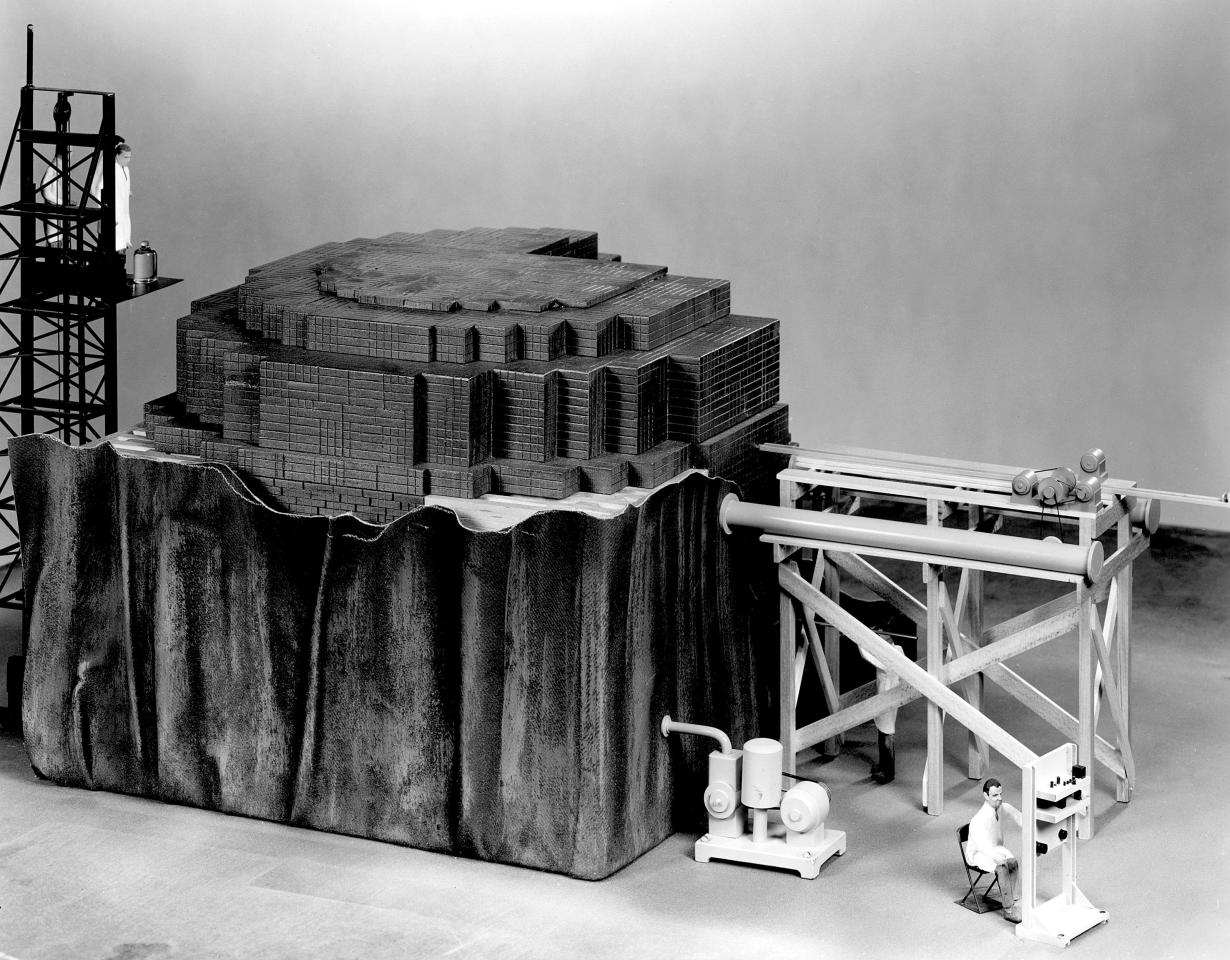
US Department of energy
In the West, reactor building and development slowed to a crawl in the last decades of the 20th century, but the industry may be on the verge of a renaissance. Despite its reputation, nuclear energy has a number of advantages. It’s not only carbon-free and emissions free. It produces tremendous amounts of power with a very small area footprint. It can be sited in any region. And, surprisingly, it has the lowest per kilowatt death rate of any energy source.
How does nuclear energy work?
All nuclear energy today is based on the principle of nuclear fission, which is simply when a heavy, unstable atom splits into two smaller atoms. This occurs naturally everywhere, even in the molecules of our own bodies, but in a nuclear reactor, this atom splitting happens at a much larger scale.
A typical nuclear reactor consists of a core made up of fuel rods that contain pellets of enriched uranium or plutonium. Enriched means that uranium has been processed in a centrifuge to increase the ratio of fissionable uranium-235 atoms to non-fissionable uranium-238. These fuel rods are packed together, interspersed with control rods made of cadmium or other materials, and immersed in water inside a containment vessel.
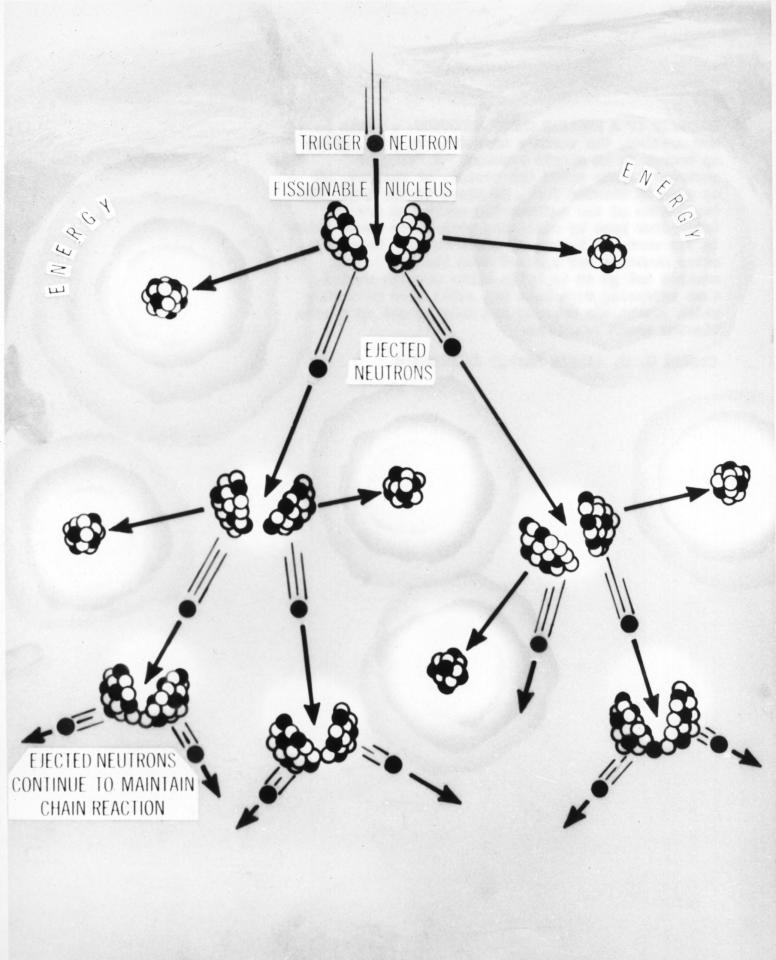
US Department of energy
Inside the core, the uranium atoms are naturally splitting. As they do so, part of the powerful forces that bind an atom together are released in the form of gamma rays, along with a pair of neutrons. As the neutrons fly, the water acts as a moderator. That is, it slows down these neutrons, increasing the odds that they will interact with the other uranium atoms.
If one of these neutrons is absorbed by an atom of uranium-235, that atom becomes unstable and splits, releasing more energy and more neutrons. This cascade of neutrons and splitting atoms builds into a chain reaction, releasing enough energy to power a city for decades. To keep the reaction from going wild and melting the core, the control rods can be inserted to absorb the neutrons and damp down the output.
All of this involves a lot of very involved physics, but the result is essentially a giant tea kettle that heats up water. This hot water goes through a heat exchanger to heat another loop of water to create steam, which then spins a turbine, which powers a dynamo to produce electricity.
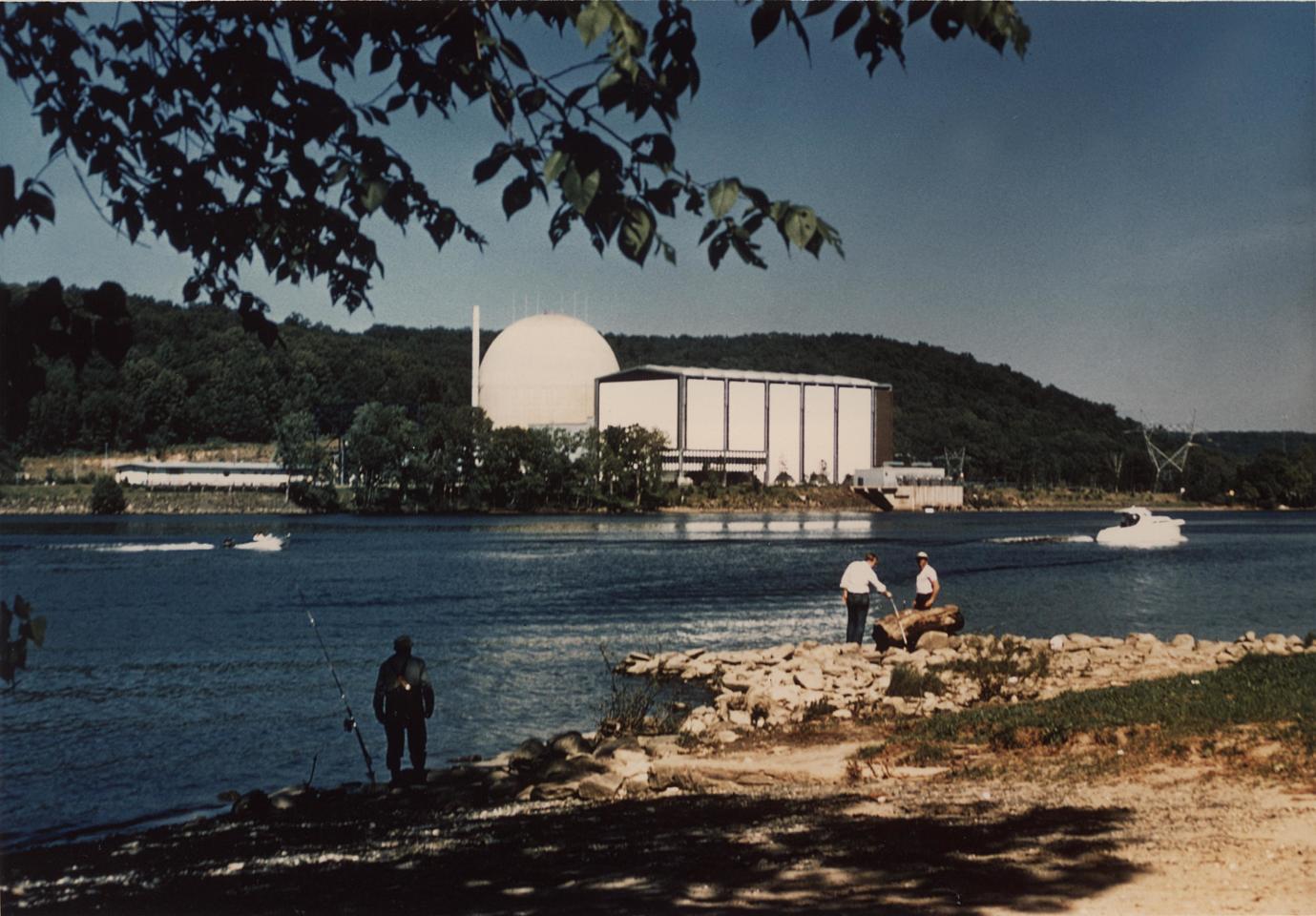
US Department of energy
At its most basic, that is what nuclear energy is – a way to make steam. However, there are a number of reactor designs in service at the moment that date back through three technological generations – Generation I were the first prototypes, Generation II were the first commercial reactors, and Generation III are essentially Generation II with more advanced features. Fourth and a fifth generation of advanced reactors are now on the way. In addition to these power reactors, there are others for special purposes, such as research reactors and reactors designed to produce weapon-grade plutonium, as well as others for producing radioactive isotopes for a wide variety of applications, such as medicine.
In this article we’ll look at the types of reactors in use around the world today, before turning to the upcoming generations, as well as the problem of nuclear waste, in coming weeks.
Current reactor types
Without trying to be exhaustive, here’s a rundown of how the major kinds of reactors in service today work. One thing to bear in mind is that some of these basic designs date back to the 1950s and have been under continuous development for over 60 years to make them safer and more efficient.
Pressurized Water Reactor (PWR)
The most common reactor type is the Pressurized Water Reactor (PWR), which was originally developed in the United States to power nuclear submarines, and is now used in 20 countries. This is the design described above, where water is used as both a moderator and a coolant.
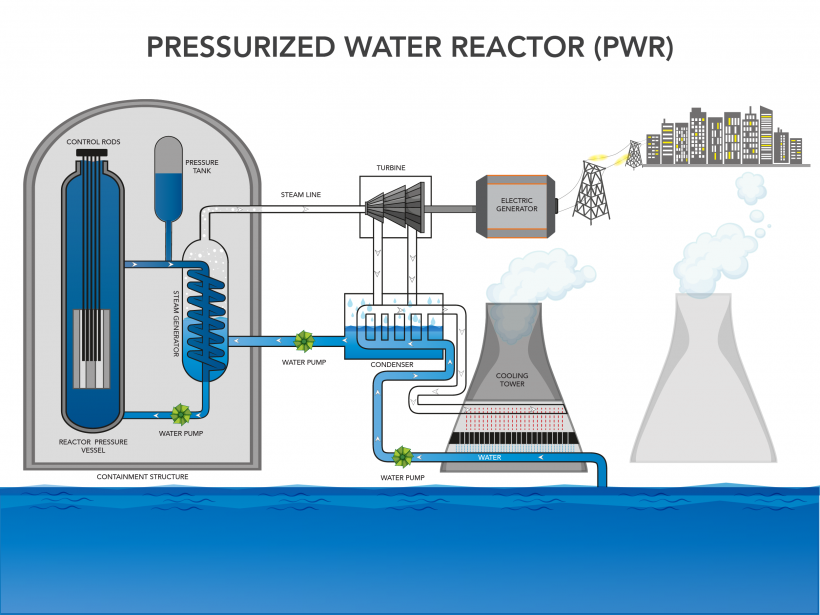
US Department of energy
In modern PWR designs the fuel is enriched to about 3.2 percent of uranium-235 and formed into pellets weighing about 10 grams, which are sealed in rods made of zirconium alloy. The stainless steel container that surrounds the reactor is designed to both seal in all the nuclear material and to serve as a pressure vessel that keeps the water liquid at a higher temperature like a pressure cooker, for greater efficiency. The container, in turn, is sealed in a steel and concrete shield to contain the reactor’s contents even in the event of a meltdown.
In older designs of PWRs, the coolant water left the shield and was used for power generation. To keep the core cool, the water had to be actively pumped at all times. These both created safety issues, as seen in the Three Mile Island disaster, so later reactors used a series of heat exchanger loops and back up passive water circulation systems to keep the core cool even in the event of a complete shutdown.
Boiling Water Reactor (BWR)
The next most common reactor, known as the Boiling Water Reactor (BWR), is simpler and inherently less safe than a PWR. As the name implies, the water in the coolant loop is allowed to boil, and the steam goes directly to the turbine from the containment shield before being recondensed and looped back to the reactor. This provides a greater chance of radioactive contamination.
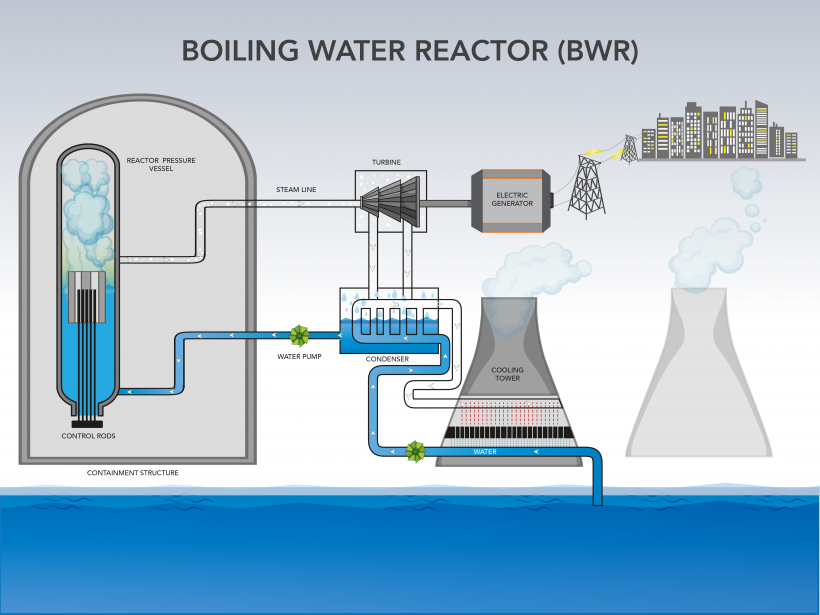
US Department of energy
There are 10 countries that use the BWR design. One of these is Japan, and the 2011 Fukishima disaster involved six BWR reactors built in the 1960s and ’70s that were already regarded as obsolete in terms of safety when a tsunami and earthquake wrecked the reactor complex.
Heavy Water Reactor (CANDU)
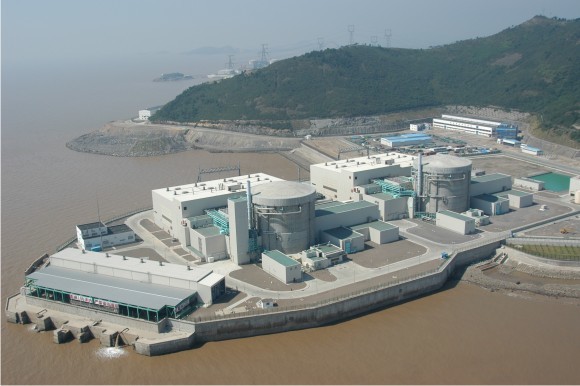
Atomic Energy of Canada Limited
A variant on the water-cooled and moderated reactor is the Pressurized Heavy Water Reactor or Canada Deuterium Uranium (CANDU). This design is, as it says, from Canada and uses unenriched uranium. Instead of ordinary water, the reactor uses heavy water, where many of the hydrogen atoms have been replaced by a hydrogen isotope called deuterium. Heavy water has less of a chance to absorb neutrons, so less enriched fuel is needed. In addition, heavy water creates neutrons of its own, which makes the nuclear reactor slower, more stable, and easier to control.
Magnox and Advanced Gas Reactor (AGR)
Two of the earliest types of commercial reactors are the Magnox and the Advanced Gas Reactor (AGR). These are direct descendants of the first atomic pile at Chicago in 1942, and were built in Britain from 1956 to 1971. Like CP-1, they use blocks of graphite as a moderator, though the fuel, which is uranium metal or uranium oxide, is sealed in magnesium alloy or stainless steel canisters rather than rods.
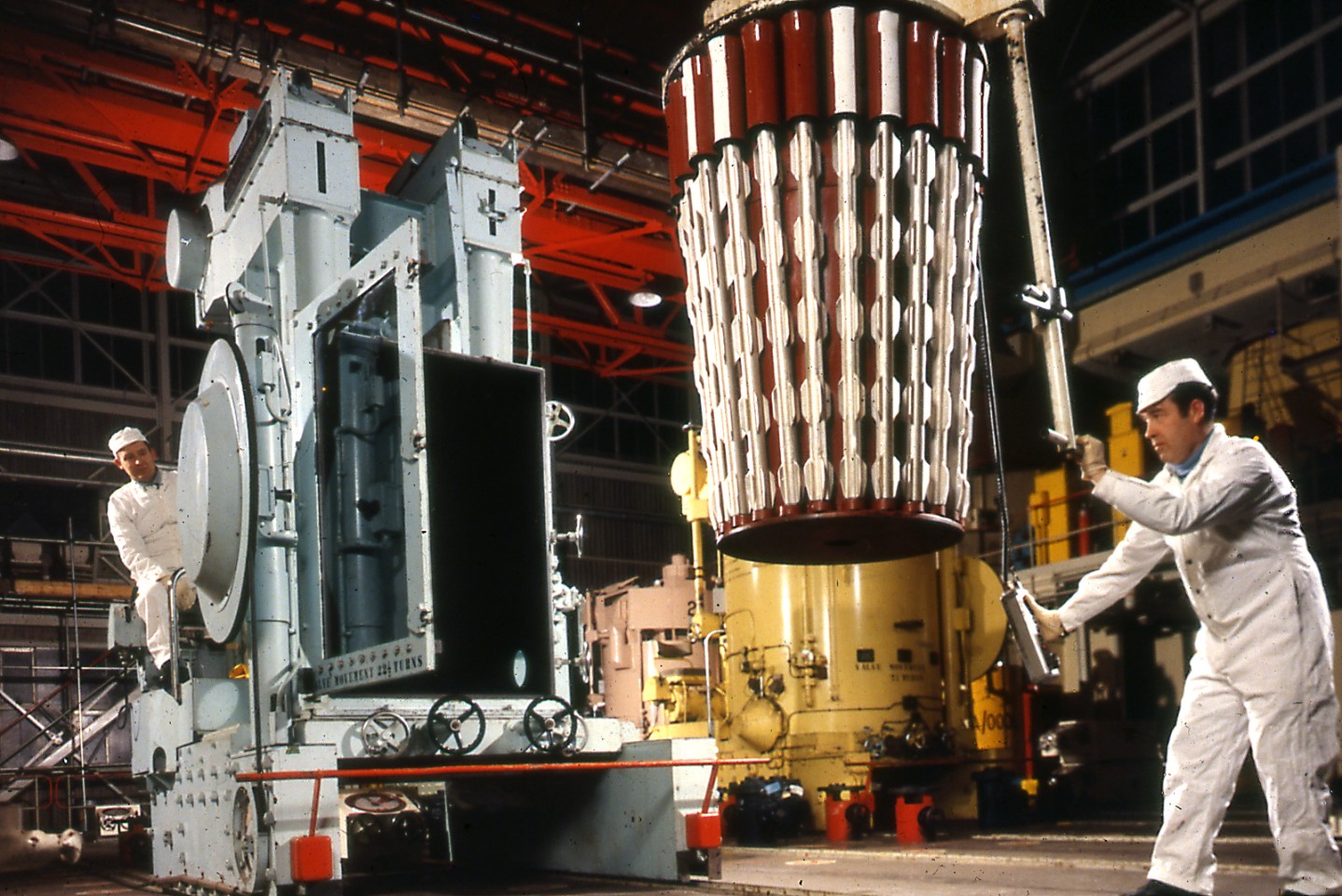
UKAEA
For cooling, these reactors use carbon dioxide. Because the earlier Magnox reactor was designed mainly to produce plutonium, it wasn’t very efficient, so the AGR was created to operate at a higher temperature for better steam production for running the turbines.
Reactor Boiling Light Water (RBMK)
Also known as the Reaktor Bolshoy Moschnosti Kanalniy (High Power Channel Reactor), the RBMK was developed in the USSR about the same time as the Magnox and shares some design features, though it’s a completely different machine. The RBMK uses a very large, water-cooled graphite core consisting of about 1,700 vertical channels containing uranium oxide enriched to 1.8 percent of uranium-235. The water is circulated under pressure and then used to generate steam.
Though a large number of RBMKs still operate in former Soviet countries, their infamously unsafe design was demonstrated by the Chernobyl disaster in 1986, when engineers violated safety protocols during a simulated power outage test, resulting in the core of one of the reactors at the complex being ruptured by a pair of steam explosions, followed by the graphite moderator catching fire.
Future reactors
We are now seeing the emergence of Generation IV reactors, with Generation V following close behind. These include modular reactors that can be built in factories rather than on site; pebble bed reactors, reactors cooled by molten salt or lead, and reactors that use fast neutrons to create more fuel than they consume. These reactor designs, which we will examine more closely in an upcoming article, share the goal of making nuclear power plants inherently safer, cheaper, more efficient, faster to build, and producing much less nuclear waste.
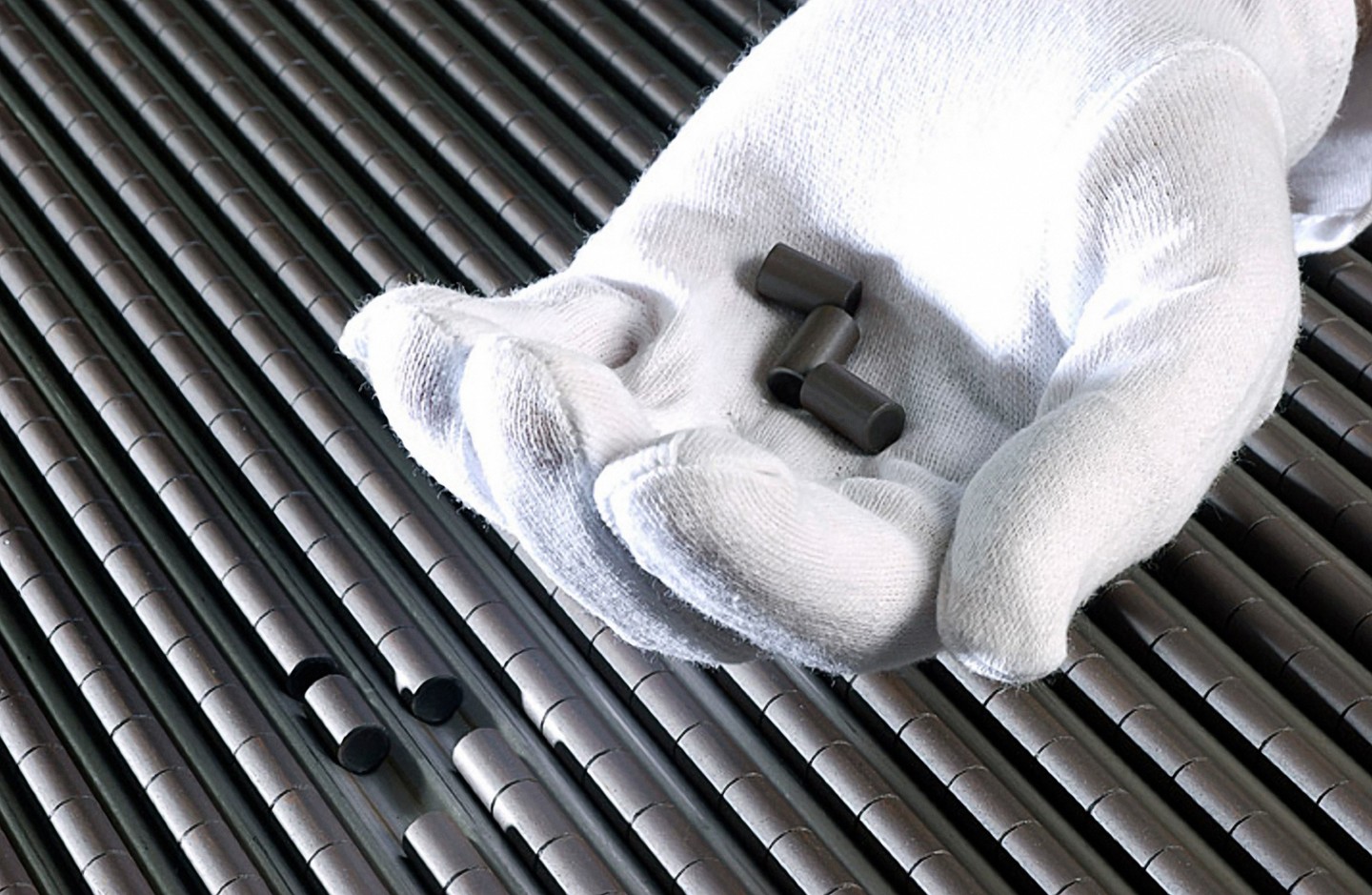
US Department of energy/Arvea
In the 1950s, it was common to hear about the coming Atomic Age that would produce all manner of wonders. That didn’t come to pass, but if nuclear technology can advance in reactor design, the procurement of a sustainable source of fuel, and a satisfactory answer to the question of nuclear waste – with the possibility of practical fusion energy thrown into the mix – then perhaps a less idealistic version of that Atomic Age will emerge in the 21st century.
We’ll continue our look at the new age of nuclear energy next week.
Source of Article